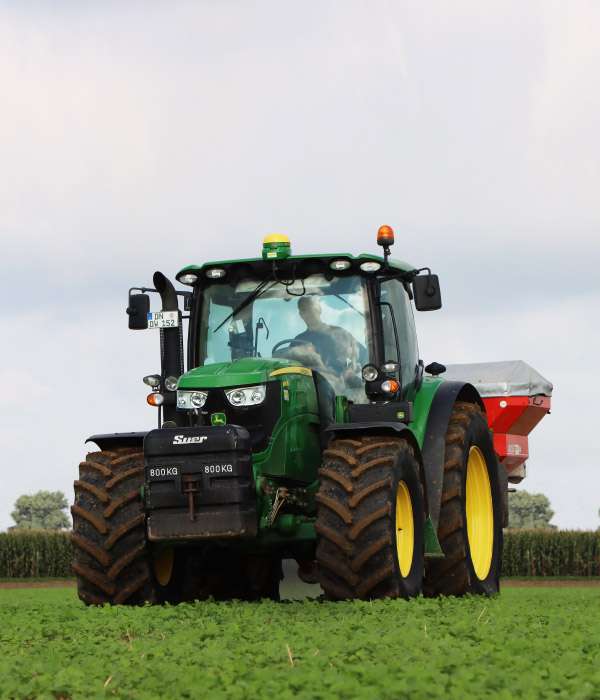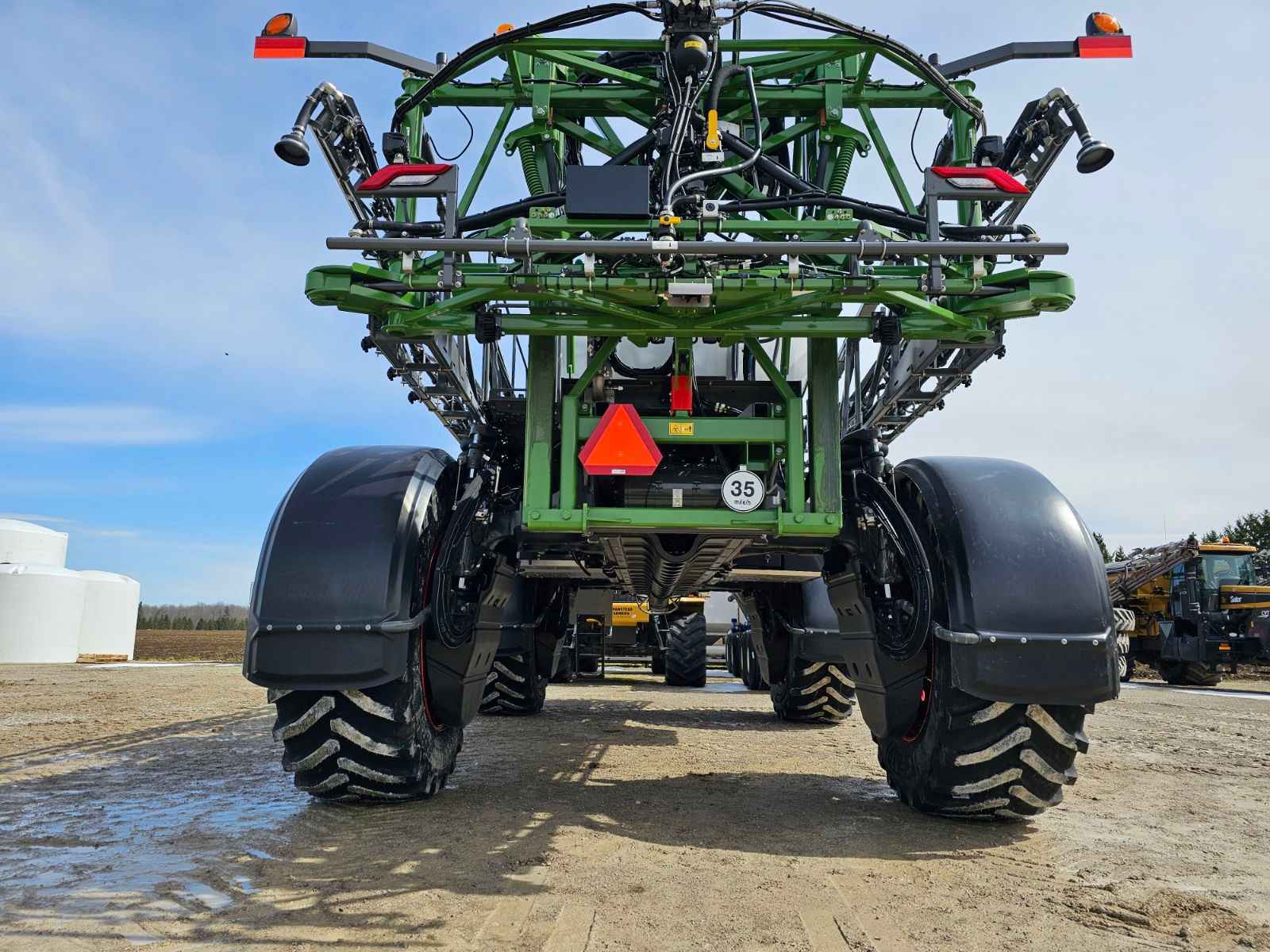
ceat-speciality:blogs-tags/all,ceat-speciality:blogs-tags/tire-advice
Maintaining Correct Air Pressure in Farm Tires is Critical for Getting Maximum PerformanceMaintaining Correct Air Pressure in Farm Tires is Critical for Getting Maximum Performance
Farmers are facing increasing pressure to keep costs down, and maintaining farm equipment, especially tires, is an essential part of this effort. Tires play a critical role in farming efficiency. Their maintenance, especially maintaining correct air pressure, can directly impact fuel consumption, soil compaction, and overall equipment longevity.
Here’s why regular air pressure checks for farm tires are so important:
1. Improved Fuel Efficiency: Under-inflated tires create more rolling resistance, which means the engine has to work harder to move the vehicle. By maintaining the proper air pressure, fuel consumption can be reduced, leading to savings over time.
2. Better Traction and Performance: Proper tire pressure ensures that the tires are in optimal contact with the ground, improving traction. This is particularly important when navigating difficult terrain or working with heavy equipment.
3. Extended Tire Life: Consistently checking air pressure and adjusting it as needed helps to prevent uneven wear, reducing the need for early replacements and saving money on new tires.
4. Reduced Risk of Damage: Under or over-inflated tires are more susceptible to damage, whether it's from wear, impact, or total failures. Keeping them at the right pressure, taking into account their load carrying capacity, helps mitigate these risks.
5. Less Soil Compaction: Over-inflated tires can increase soil compaction, which affects crop yield. Correct tire pressure helps distribute the weight of the equipment more evenly, reducing soil damage.
Speaking of air pressure, more and more farmers are switching to IF and VF tires. IF tires can carry up to 20% more load than a standard radial at a given inflation pressure—or they can carry the same load (as a standard radial) at a lower inflation pressure. VF tires can carry up to 40% more load than a standard radial at a given inflation pressure—or the same load (as a standard radial) at a lower inflation pressure. This has many benefits, including minimizing soil compaction.
CEAT Specialty is incorporating IF/VF technologies into more and more of its Ag tires, including the Spraymax VF and Torquemax VF.
Regularly checking tire pressure should be part of a routine maintenance schedule for farmers. It's a simple yet effective way to reduce operating costs and ensure that equipment is running efficiently.
Read the full blog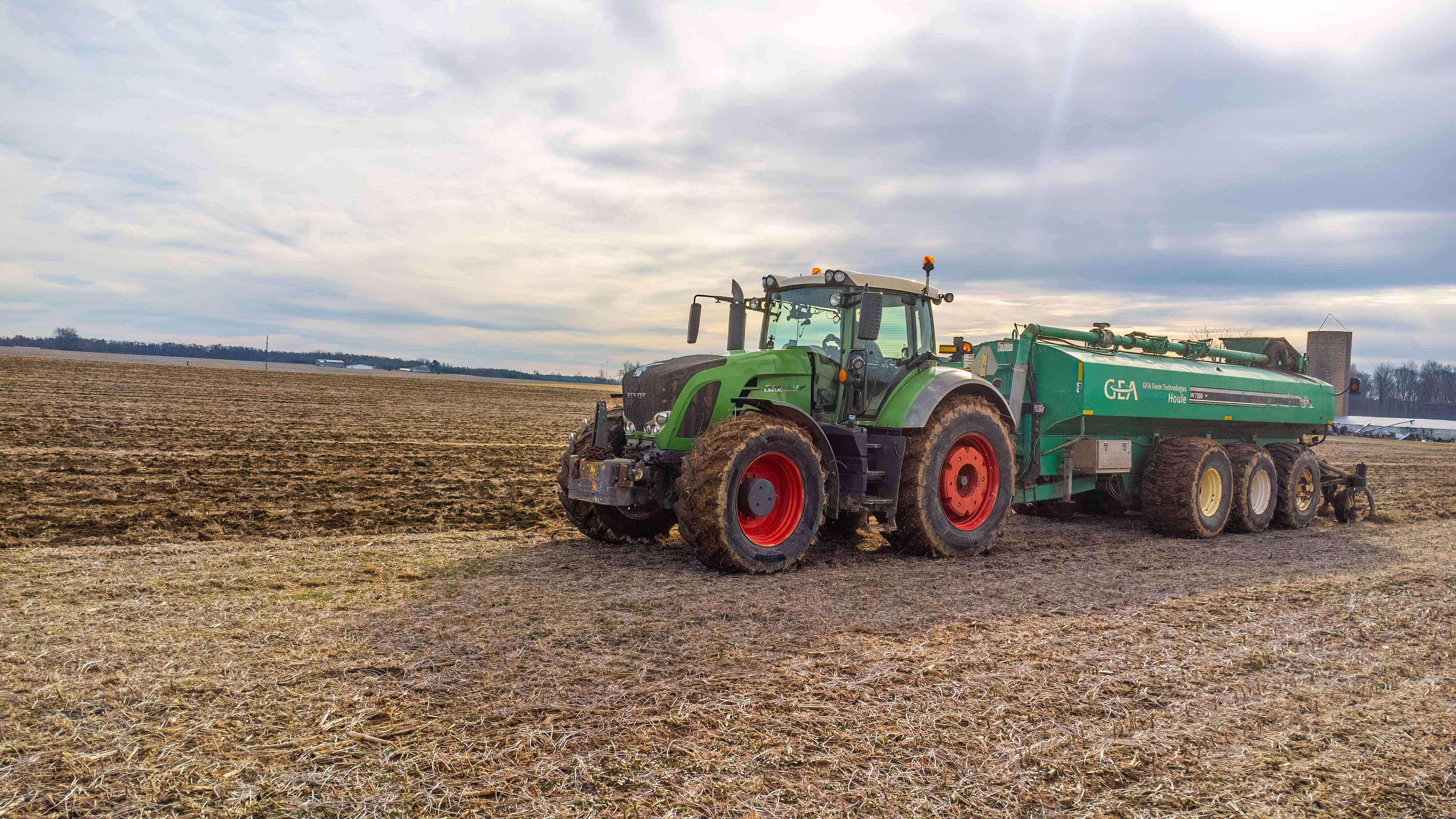
ceat-speciality:blogs-tags/all,ceat-speciality:blogs-tags/tire-advice
Knowing Your Ag Tire Definitions Can Save Farmers MoneyKnowing Your Ag Tire Definitions Can Save Farmers Money
Looking to purchase farm tractor tires? it is good to understand the key definitions so you can have a productive, informed discussion with your local tire dealer.
Here are some important definitions you need to know to ensure you make the right choice for your specific needs:
1. Bias Construction — bias ply cords extend diagonally from bead to bead on the tire. Bias tires might be a viable alternative, but they do not provide the benefits of radial technology. If you want the best traction possible, improved efficiency, larger footprints, reduced compaction, a better ride, or any of the above, you need to stick with radials. Bias Ag tires do not deliver these improved features due to the carcass design.
In most cases, the bias tire will be less expensive than the radial but not always. Pricing differentials have narrowed in the last few years. It is always good to check both if you are considering bias tires. Another very important factor is the service life of a comparable radial . . . about 30% longer than the bias. However, bias tires can be the right choice for certain applications; your trusted tire dealer can help guide you in deciding whether to go radial or bias.
2. Compound — a particular blend of rubber and other raw materials enabling desired performance characteristics of the tire. For instance, the CEAT Torquemax radial tire features a compound that provides durability and ensures resistance to chipping and cuts. Meant for high power tractors, the Torquemax ensures a constant and smooth transfer of torque from the tractor to the ground.
3. Flotation — defines tires with wider section widths than standard tires; designed to improve traction and reduce soil compaction, while enabling the equipment to operate in wet mucky conditions. The new CEAT Flotation VF X3, for example, features a big center block at the tread center that provides more traction. For reduced soil compaction, this VF flotation tire can operate with 40 percent less inflation pressure than a standard radial tire or carry 40 percent more load at the same air pressure as a standard radial.
5. Load Carrying Capacity — amount of weight the tire is certified to carry at a specified air pressure. Talk to your tire dealer and consult tire manufacturer load tables.
6. Load Index — an assigned number equating to the load carrying capacity of the tire.
7. Radial tire — produced with radial cords extending at right angles from bead to bead across the tread that “radiate” from the imaginary center of the wheel, allowing the tread to act independent of the sidewall, resulting in a larger footprint compared to bias tires. If you want the best traction possible, improved efficiency, larger footprints, reduced compaction, a better ride, or any of the above, you need radial tires.
CEAT radial tires offer low compaction, high traction, and high roadability. With tilted lug tips, the FARMAX R65 radial tractor tire, for example, delivers superior operator comfort, with less vibration and noise. A higher angle and lug overlap at the center offers superior roadability.
Tires are a major operating expense for farmers. It pays to do your homework and consult with your trusted tire dealer to make an informed buying decision.
Read the full blog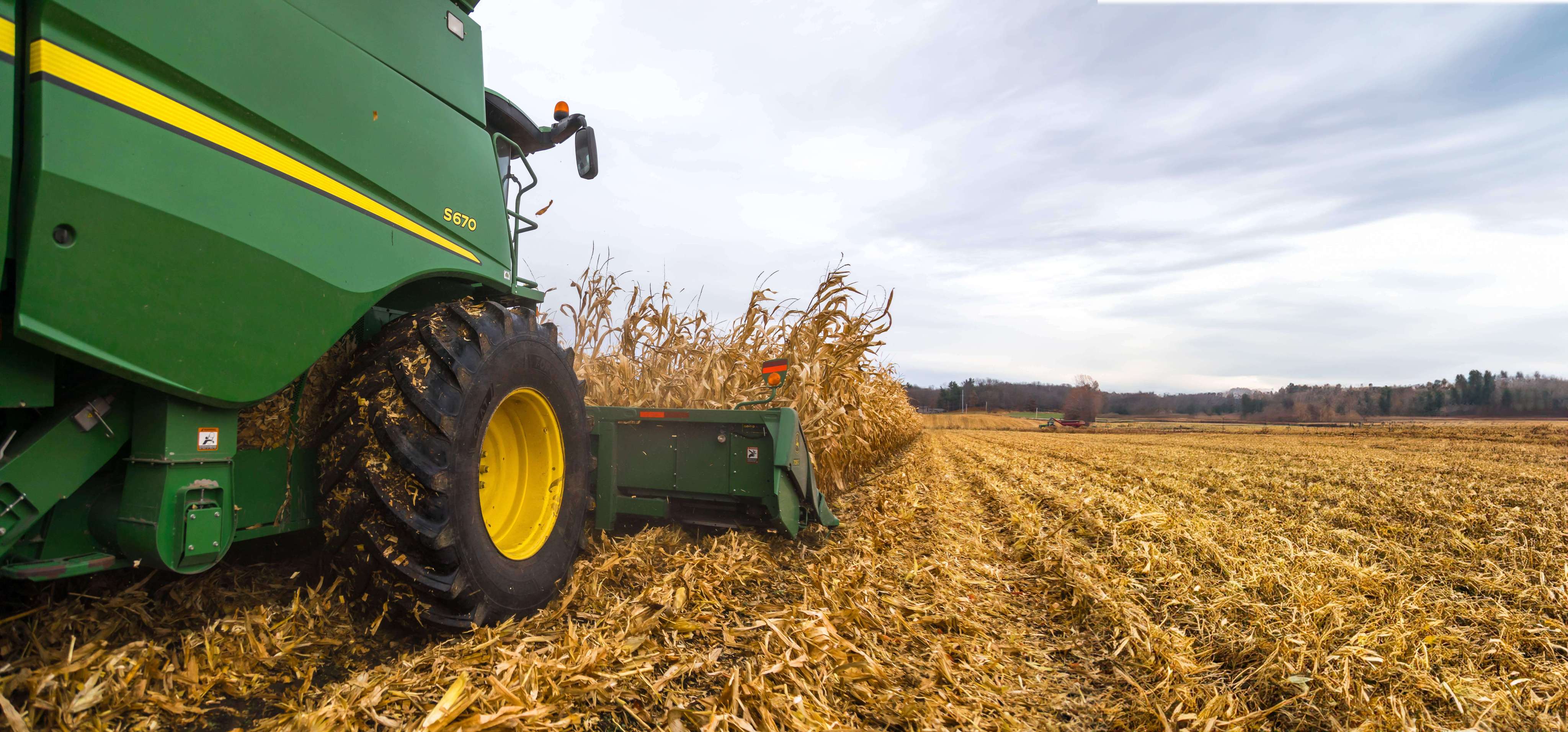
ceat-speciality:blogs-tags/all,ceat-speciality:blogs-tags/tire-advice
Five Insights for Purchasing Farm Tractor TiresFive Insights for Purchasing Farm Tractor Tires
Looking to buy farm tractor tires? Here’s five key considerations before you make this important purchase:
1. Total Cost of Ownership (TCO):
This is the key factor for any long-term purchase. A tire might have a lower initial cost, but if it wears out quickly or doesn't perform optimally, it can end up costing more in the long run. Tires like CEAT's Torquemax VF offer superior performance and longevity, giving farmers better value through reduced replacement costs and improved operational efficiency. Always consider both the upfront cost and how the tire performs over its lifespan when calculating TCO.
2. Radial vs. Bias Tires:
Radial tires generally offer better traction, longer life, and improved fuel efficiency compared to bias-ply tires. With features like larger footprints and reduced compaction, radial tires are better suited for most modern farming applications. While bias tires may still be appropriate for some specialized tasks, radials like CEAT's Ag radials are generally a more advanced, performance-focused choice.
3. R1W Tread Depth:
The R1W tread pattern is ideal for operations that require superior grip in challenging conditions such as deep mud, snow, and clay. The R1W offers a 25% deeper cleat than regular R1 tires, providing farmers with the traction needed to avoid getting stuck in more demanding terrain. For farmers working in wet or muddy conditions, the FARMAX R70 is a solid choice for enhanced performance.
4. Warranty:
A solid warranty is essential, especially given the significant investment farm tires represent. The extended warranty offered by CEAT—7 years for the tire itself and a 3-year field hazard warranty—adds reassurance for farmers, knowing that if something goes wrong, they're covered. Not all brands offer this level of protection, so it's a distinguishing feature that can provide peace of mind.
5. IF/VF Technology:
The introduction of IF (Increased Flexion) and VF (Very High Flexion) tires is one of the most revolutionary advancements in agricultural tires. These tires can handle more weight at lower inflation pressures, which reduces soil compaction and increases fuel efficiency by improving traction. IF tires carry 20% more load or the same load at 20% lower pressure, while VF tires offer an even greater improvement (40% more load or the same load at 40% lower pressure). This technology, found in several CEAT products like the Spraymax VF, is critical for modern farming practices, particularly for those looking to balance productivity with sustainable land management.
CEAT’s incorporation of these advanced features, including IF/VF technology and a strong warranty, positions CEAT as a strong option for farmers looking to maximize their tire investments.
If you're in the market for farm tractor tires, it's wise to talk to a knowledgeable dealer who can help you choose the right tire based on your specific needs and local conditions. Whether you're working with large equipment, diverse crops, or challenging soil types, selecting the right tire is crucial to maintaining efficiency and productivity on the farm.
Read the full blog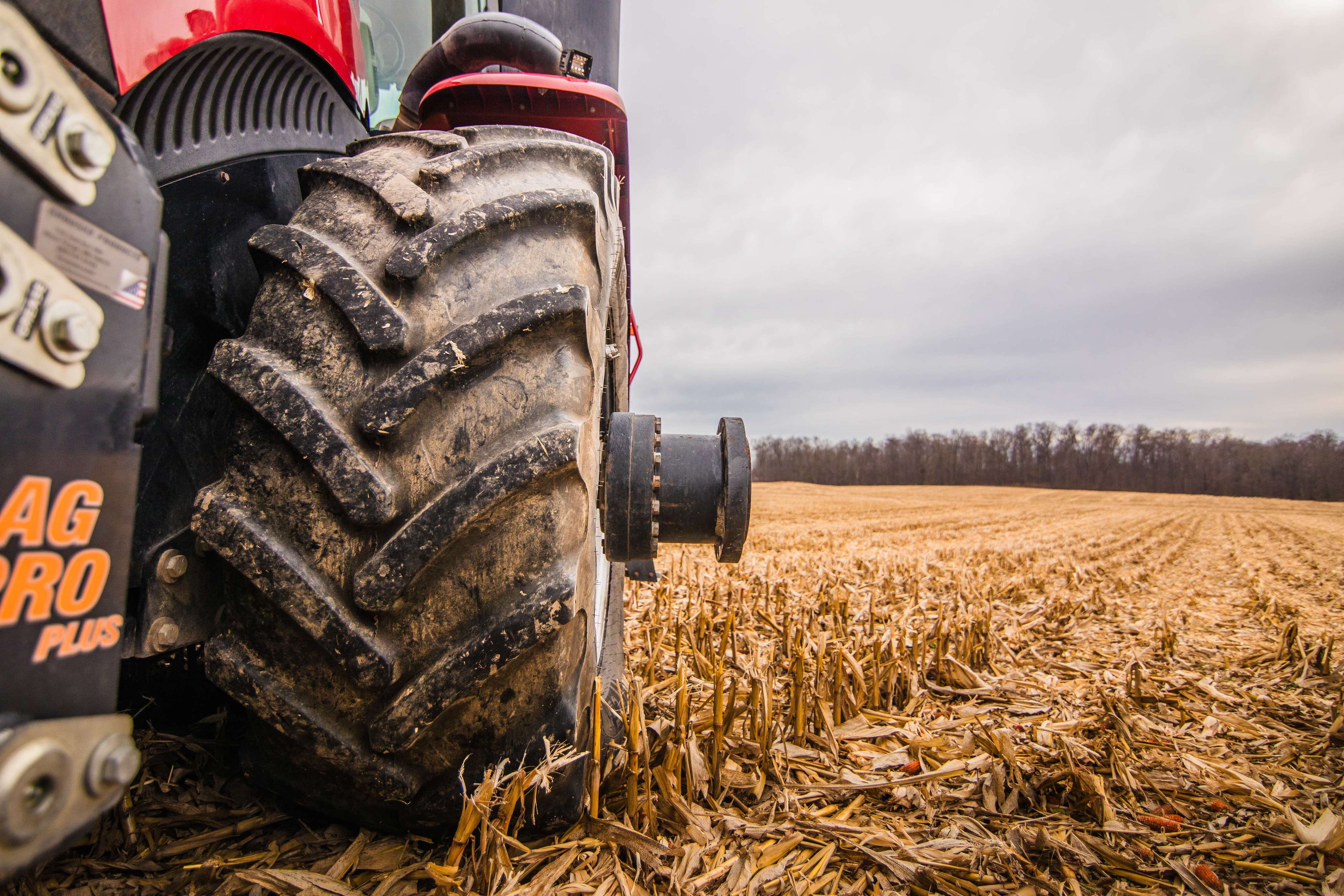
ceat-speciality:blogs-tags/all,ceat-speciality:blogs-tags/tire-advice
Key Considerations for Choosing the Right Tractor TireKey Considerations for Choosing the Right Tractor Tire
Choosing the right tire setup for a tractor involves a lot of considerations beyond just picking a tire size or type. The decision affects everything from performance to cost efficiency over time.
Here's a breakdown of why tire choice is such a complex but crucial decision for farmers or anyone operating heavy machinery:
Key Considerations When Choosing Tires:
Traction: This is one of the most immediate and noticeable effects of your tire choice. The right tires can significantly improve performance in the field, whether you're working in loose soil, wet conditions, or muddy terrain. More aggressive tread patterns or larger tires can provide better grip, but they might come at the cost of ride comfort on roads or wear rate.
Ride Comfort: On the road, or when moving between fields, ride comfort plays a huge role in minimizing operator fatigue. Larger or higher-pressure tires often provide a smoother ride but may not always be ideal for field conditions where low-pressure tires excel.
As Barry Hawn, Director of Off-Road Products for Tirecraft Ontario, notes, “Farmers are in their tractors all day long. When they get on the road they’ve got to get to the next field as quickly as possible. They are going pretty fast, so ride comfort is a huge issue. If they get beat up on the road, at the end of the day they are not happy!”
“The CEAT tires have done a great job with their capability to roll down the road with a nice comfortable ride,” says Hawn who has been in the tire business for 50 years. He has experience with the vast majority of Ag tire brands.
Durability: The cost-per-hour metric you're talking about really comes into play here. A more expensive tire might last longer, reducing the overall wear cost, but it’s tough to predict exactly how long a tire will last in different conditions. This is especially tricky since tire wear is highly dependent on factors like soil type, speed, load, and operating conditions.
Load Capacity: Different tires have different load-bearing capacities, which affects the total weight you can safely carry. Overloading tires leads to premature wear and safety concerns, so understanding the weight distribution and what your tractor is handling is critical.
Cost Per Hour: This is the tricky one because, as you mentioned, you can't fully determine the cost until the tire is worn out. But you can try to estimate it based on tire life expectancy in your conditions, maintenance costs, and how long it will last relative to its acquisition price. Some tires might cost more upfront but will save you money in the long run due to longer wear life or better fuel efficiency.
Fuel Efficiency: The type of tire can affect fuel economy as well. Some tires, particularly those with less rolling resistance, might save you fuel in the long run, especially on hard surfaces like roads.
Balancing Act
In the end, tire choice is about balancing these factors against your operating conditions and business model. The immediate feedback from traction and comfort on the road helps you know right away whether you’ve made a good choice in those areas. But the cost-per-hour and long-term wear-and-tear won’t be clear until later. Keeping track of tire performance over time and understanding how tire wear correlates with cost per hour will help you make better future decisions.
“If you have a tire that performs well in the field and equally well on the road . . . along with long tread wear . . . you have a winner,” Hawn says. “CEAT is that tire!”
Read the full blog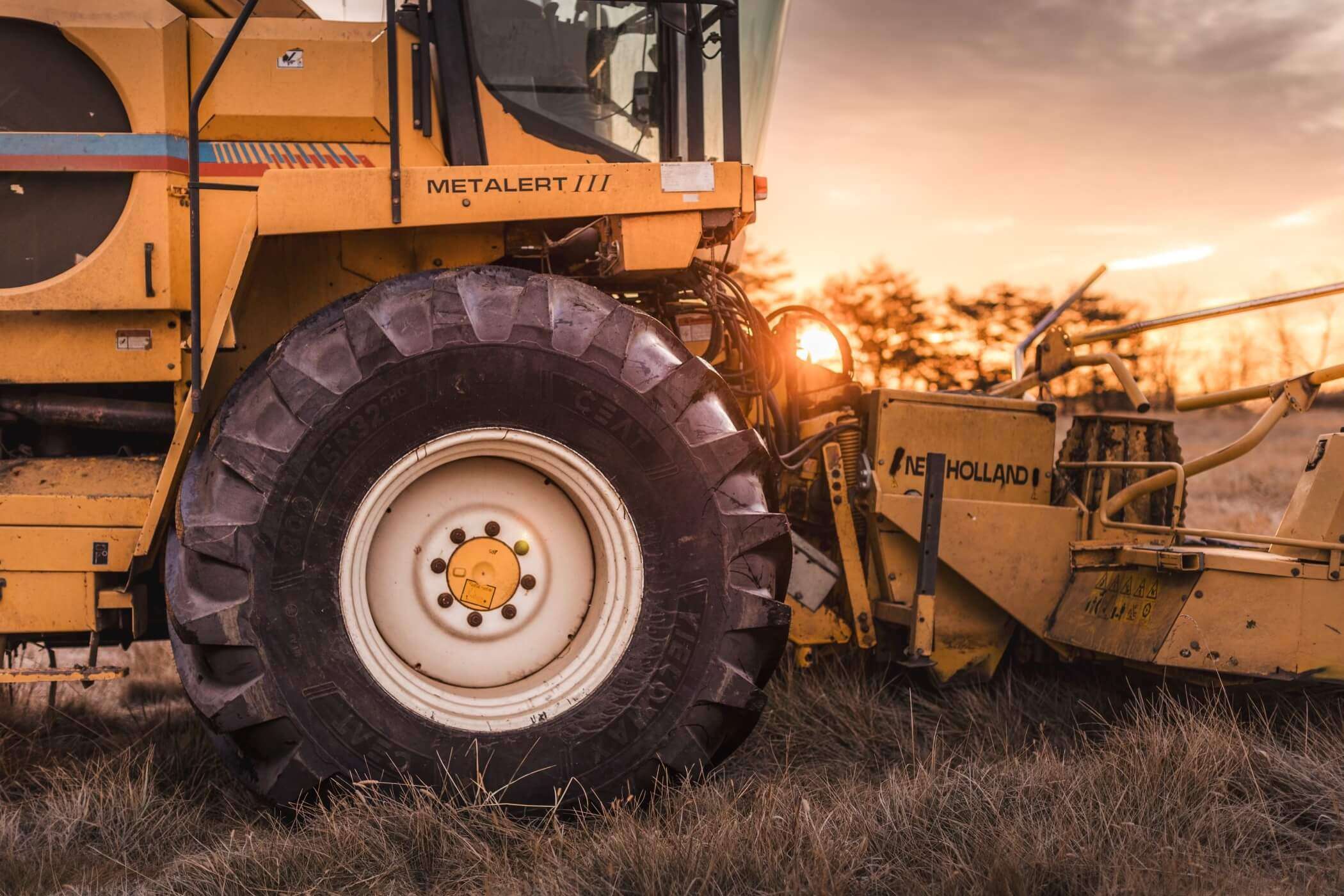
ceat-speciality:blogs-tags/all,ceat-speciality:blogs-tags/tire-advice
Understanding Ag Tire TerminologyUnderstanding Ag Tire Terminology
When purchasing farm tires, understanding the terminology and key definitions is crucial to ensuring you select the right tires for your specific needs. Here are some important terms and concepts to familiarize yourself with:
1. Tire Size
Ag tires are usually labeled with a series of numbers that indicate the tire's size and specifications. For example, a tire marked 18.4-34 can be broken down as follows:
- 18.4: The width of the tire in inches (18.4 inches wide).
- 34: The diameter of the tire in inches (34-inch diameter).
There are also metric sizes, such as 420/85R30, where:
- 420: The tire's width in millimeters.
- 85: The aspect ratio (percentage of tire height relative to the width).
- R30: The radial construction (R) and the diameter of the rim (30 inches).
2. Aspect Ratio
The aspect ratio refers to the ratio of the tire's height to its width. For example, in an 18.4-34 tire, the aspect ratio would be approximately 80% (the height is 80% of the width). Tires with lower aspect ratios are generally wider, while those with higher ratios tend to be taller.
3. Radial vs. Bias Ply
- Radial Tires: The plies (layers of fabric or steel) are arranged at a 90-degree angle to the direction of travel, offering better flexibility, improved traction, and more fuel efficiency. Most modern farm tractors use radial tires.
- Bias Ply Tires: The plies are arranged at an angle (usually 45 degrees) to the direction of travel, giving the tire a stiffer, more durable structure. Bia tires can be the right choice for certain applications; your trusted tire dealer can help guide you in deciding whether to go radial or bias.
The CEAT LOADPRO bias tire, for example, is designed with an optimized lug to reduce uneven wear-out and provide better stability. The high denier textile casing, combined with superior quality tread, makes it suitable for backhoe loader and tele-handlers in agro-industrial, lifting and loading applications.
4. Load Index
The load index is a number that represents the maximum load a tire can carry. It's essential for ensuring the tires are rated to handle the weight of the tractor and any implement being towed or carried.
5. Speed Rating
This is a letter that indicates the maximum speed the tire can safely sustain for extended periods. It's typically not a critical factor for farm tractors, but it’s still good to know. For instance, a speed rating of A8 might indicate a maximum speed of around 25 mph.
6. Tire Tread Pattern
The tread design on the tire will significantly affect performance. Common tread patterns for farm tractors include:
- R1 (Agricultural): Deep, lugged tread that provides excellent traction on loose soil, muddy fields, and uneven terrain.
- R1W (Winter): Similar to R1 but designed for improved traction in winter conditions.
- R2 (Rice and Swamp): Very deep lugs designed for wet, swampy conditions.
- R3 (Turf): Shallower, wider lugs that are gentler on grass or turf surfaces, making them ideal for mowing or landscaping.
- R4 (Industrial): More robust, flatter tread designed for working on hard surfaces like roads and pavements. It’s ideal for loaders and other heavy-duty equipment.
7. Tire Pressure
Maintaining the correct tire pressure is crucial for safety, efficiency, and tire longevity. Overinflated or underinflated tires can lead to uneven wear, decreased fuel efficiency, and potentially unsafe handling. Tire pressure varies based on the load and size of the tire, so always consult the manufacturer’s recommendations.
8. Tire Ply Rating
The ply rating refers to the strength of the tire. In older bias ply tires, the ply rating represented the number of plies in the tire, but today it typically refers to the tire’s load-bearing capacity. A higher ply rating indicates a stronger tire capable of handling more weight.
9. Sidewall Markings
In addition to the tire size and type, the sidewall of a tractor tire will often feature additional information, such as:
- Max Load: Maximum weight the tire can carry.
- Max Pressure: The maximum inflation pressure.
- DOT Certification: Indicates the tire meets the U.S. Department of Transportation standards.
10. Tire Construction
Tractor tires can be made with either radial or bias ply construction:
- Radial Tires: Use steel belts beneath the tread for strength and durability. They provide a smoother ride, better traction, and longer wear.
- Bias Ply Tires: Older design, offering strength but with more rigid construction, often leading to less comfort and uneven wear.
Conclusion:
When talking to your local tire dealer, be sure to specify what type of farming work you’ll be doing (e.g., tilling, hauling, irrigation, etc.), and the kind of terrain you’ll encounter (e.g., soft, wet ground, or hard, dry fields). This will help your dealer recommend the best tires for your specific needs, ensuring that you maximize efficiency and get the most value out of your purchase.
Read the full blog
ceat-speciality:blogs-tags/all,ceat-speciality:blogs-tags/tire-advice
How Long Should Your Farm Tires Last?How Long Should Your Farm Tires Last?
What is the average lifespan of an Ag tire? And what steps can a farmer take to prolong it?
The lifespan of agricultural (Ag) tires can vary widely based on factors like the type of tire, usage conditions, maintenance and load. Generally, you can expect:
- Radial Ag tires: 3,000 to 5,000 hours of use
- Bias-ply Ag tires: 2,000 to 3,000 hours of use
The first way to maximize tire life is to buy high-quality tires like CEAT. Pay attention to the materials used in their construction. For instance, the CEAT FLOATMAX RT for Ag trailers, has steel belted construction for resistance to puncture and stubble damage. Steel-belted construction is best for durability and heat dissipation. This tire also incorporates stubble guard compounds to minimize punctures and stubble damage. Many CEAT Ag radials also feature special design features ranging from reinforced sidewalls to bead guards to boost tire life.
The lifespan of an Ag tire is dependent on how it is used and for what purposes. If the tire is used only in the field, it will last much longer before wearing out. Unfortunately, with farms scattered and tractors traveling on the road quite a bit these days, Ag tire life is diminished due to road wear.
Proper maintenance, like regular inspections, inflation checks, and proper storage, can significantly extend tire life, while heavy loads and rough terrains can shorten their lifespan. Always consider the specific tire model and usage patterns for a more accurate estimate . . . your trusted tire dealer can provide good estimates based on the above criteria.
Ag tires have made tremendous gains in longevity in recent years. Ag tire manufacturers like CEAT devote considerable R&D resources to develop chemicals and other ingredients in the tire compound to help with ozone cracking, stubble damage and wear.
Of course. Good practices will add to the life of a tire. Proper inflation relevant to the load is critical. Make sure to have them set at the proper recommended pressure for the load, speed and application. This will prevent unnecessary damage and wear on the lugs and casing of a tire.
If possible, take the weight off the tires by lifting the machine slightly during prolonged periods of storage. This will help to prevent stress at the top of the tire casing and cause flat-spotting.
Washing off the tires from manure, oils or other foreign substances is a good practice. Storing tires out of direct sunlight when possible will also pay off in tire life.
The tread pattern has a huge influence on tire life. For instance, deeper lugs are not always better when it comes to choosing among R-1, R-1W and R-2 tires because tire life is not just a matter of how much rubber you have. If you’re operating primarily in mud, the deeper lugs of the R-1W or R-2 can be a great investment. But if you’re operating primarily in dry or hard soils or (are) doing a lot of roading, deep lugs will scour off more quickly or flex and crack, actually reducing your tire’s life. In those cases, you’d be better off with a shallower R-1 tread.
The most important factor in extending the life of farm tires is minimizing the buildup of heat. Don’t overload your tires. Don’t operate at speeds higher than they are built to handle. And the single best thing you can do for your tires is to operate them at the correct inflation pressure, which minimizes the chance of overheating.
On the road, an overinflated tire will bulge in the middle, reducing contact with the ground in the center of the tread, which is likely to lead to faster, more marked wear on the central part of the tire.
There are different drawbacks to driving with underinflated tires. Excessive casing deflection due to underinflation leads to a rise in internal temperature and the structure of the tire deteriorates progressively, which may lead to a sudden puncture or break in the casing. When a tire overheats, the rubber become more supple and therefore more vulnerable to wear. Ideally, you should adjust inflation pressure based on the load, the application and the type of ground.
Tires are a significant expense for any farm operation. Following these steps will help you get the most value out of your tire investment.
Read the full blog
ceat-speciality:blogs-tags/all,ceat-speciality:blogs-tags/tire-advice
A Guide to Farm Tractor Tire Types and SizesA Guide to Farm Tractor Tire Types and Sizes
Are you in the market for farm tractor tires? In addition to the type and size of the tire, tread design is very important, as it can greatly affect the performance of the tractor. We will examine 4 different tread designs of tractor tires: R1, R2, R3 and R4, which each serve a different purpose:
Common Tractor Tire Sizes
R1 (Agricultural Traction)
Description: These are standard agricultural tires designed for fieldwork. They have deep treads for better traction in soft soil. R1 tires are the narrowest of the 3 designations that are suitable for off-road use. It is designed to generate maximum adhesion over challenging terrain and offers the most aggressive traction.
Common sizes include 320/70R24, 380/85R24 and 400/75R38.
R1 tires, like the popular CEAT FARMAX R70, can also come in a R1-W designation for extended tire lifespan and enhanced traction. The tread depth of an R-1W tire is at least 20 percent deeper than the same sized R-1 tire.
In addition to deeper tread depth, the FARMAX R70 also features a lower shoulder angle for outstanding traction, rounded shoulders to minimize soil and crop damage, and a wider tread and larger inner volume to decrease soil compaction.
R2 (Agricultural Flotation)
Description: R2 tires have wider treads for reduced soil compaction, ideal for wet or soft ground conditions. R2 tires, which are ideal for Ag trailers and other farm implements, have the widest spacing between lugs, which allows mud to shed easier.
Common sizes include 480/45-17 and 600/55-22.5.
R3 (Turf Tires)
Description: These tires have a smoother tread pattern for minimal ground disturbance, making them great for lawns and sensitive areas. They are designed to operate on yards and grassy terrain without leaving behind tracks. The tread depth of an R3 is approximately half as deep as an R1 tire. It distributes the tractor weight across a wider surface area, allowing the tires to be gentle on lawns to minimize damage.
Common sizes include 23x8.50-12 and 16.9-24.
R4 (Industrial/Construction)
Description: R4 tires are designed for loader and industrial applications, providing good traction and durability on hard surfaces. It is a wide and durable tire, useful in a wide variety of purposes and conditions, and can be used on both hard and soft surfaces. In terms of tread depth, they fall in between R1 and R3 patterns, more aggressive than R3 but less aggressive than an R1.
Common sizes include 15.5-25 and 17.5-24.
Consider these factors to choose the right type of tractor tire for your operation:
Application: Consider what tasks your tractor will perform (fieldwork, landscaping, construction).
Soil Type: Assess the soil conditions you'll encounter (hard, soft, muddy).
Load Requirements: Check the load capacity needed for your tractor.
Tread Pattern: Match the tread design to your work environment for optimal performance.
Selecting the right tractor tires involves understanding the specifications and matching them to your specific needs. If you have more detailed questions, your local Ag tire dealer can be a great resource.
Read the full blog
ceat-speciality:blogs-tags/all,ceat-speciality:blogs-tags/tire-advice
The Right Ag Tires Can Be a Huge Difference MakerThe Right Ag Tires Can Be a Huge Difference Maker
Farming and ranching demand a lot from equipment, and tires are no exception. Given the diverse and challenging conditions—whether it's plowing fields, hauling heavy loads, or navigating rough terrain—having tires that can handle these demands is crucial.
Dependable traction ensures that machinery stays in control and efficient, good roadability is key for arriving at the next field in good shape, and low soil compaction helps preserve soil health and productivity.
The High-quality Ag tires can make a significant difference in both the performance and long-term success of the farm. This is where CEAT Specialty comes in. The company’s mission is to offer high quality tires at a better value to North America’s farmers and ranchers. By all accounts, the company is accomplishing its mission after seven years in North America.
“As a distributor of farm tires, we look for quality, dependability and diversity in sizes, along with affordability. CEAT covers all our bases,” says Jay Sellers, OTR, Farm & Track Manager, T&W Tires in Oklahoma.
“The CEAT is a very tough tire, well built. My customers have been very happy with the traction, so I’m moving a lot of my stock over to CEAT,” says Kerry Andrew, owner of Integra Tire Mirror in Alberta, Canada.
“The CEAT tires have done a great job with their capability to roll down the road with a nice comfortable ride. Our customers have also been very happy with the CEAT traction in the field,” says Barry Hawn, Director of Off-Road Products, Tirecraft Ontario.
The CEAT FARMAX radial tractor tire line, for example, delivers long tread life, dependable traction in the field, a smooth and steady ride on the road, and low soil compaction.
This is accomplished through a R1-W tread depth for extended tire lifespan, lower shoulder angle for enhanced traction, and rounded shoulders to minimize soil and crop damage.
High technology at an affordable price – that is the CEAT advantage!
Read the full blog
ceat-speciality:blogs-tags/all,ceat-speciality:blogs-tags/tire-advice
Important Farm Tire Definitions to KnowImportant Farm Tire Definitions to Know
When you’re looking to purchase farm tractor tires, it is good to understand the key definitions so you can have a productive, informed discussion with your local tire dealer.
Here are some important definitions you need to know to ensure you make the right choice for your specific needs:
1. Bias Construction — bias ply cords extend diagonally from bead to bead on the tire. Bias tires might be a viable alternative but they do not provide the benefits of radial technology. If you want the best traction possible, improved efficiency, larger footprints, reduced compaction, a better ride, or any of the above, you need to stick with radials. Bias Ag tires do not deliver these improved features due to the carcass design.
In most cases, the bias tire will be less expensive than the radial but not always. Pricing differentials have narrowed in the last few years. It is always good to check both if you are considering bias tires. Another very important factor is the service life of a comparable radial . . . about 30% longer than the bias. However, bias tires can be the right choice for certain applications; your trusted tire dealer can help guide you in deciding whether to go radial or bias.
The CEAT LOADPRO bias tire, for example, is designed with an optimized lug to reduce uneven wear-out and provide better stability. The high denier textile casing, combined with superior quality tread, makes it suitable for backhoe loader and tele-handlers in agro-industrial, lifting and loading applications.
2. Compound — a particular blend of rubber and other raw materials enabling desired performance characteristics of the tire. For instance, the CEAT Torquemax radial tire features a compound that provides durability and ensures resistance to chipping and cuts. Meant for high power tractors, the Torquemax ensures a constant and smooth transfer of torque from the tractor to the ground.
3. Flotation — defines tires with wider section widths than standard tires; designed to improve traction and reduce soil compaction, while enabling the equipment to operate in wet mucky conditions. The newest flotation tire from CEAT Specialty is the FLOATMAX CARGO PLUS, which offers high traction, stubble puncture protection, uniform pressure distribution, and minimal soil/crop damage for tank and trailer applications.
4. IF (increased flexion) and VF (very high flexion) tires — As their full names indicate, IF and VF tires offer increased flexibility. At an equal pressure to standard radials, an IF tire can bear 20% more weight and a VF tire can bear 40% more weight. Alternately, these tires can carry the same load as a standard radial at 20% or 40% lesser pressure. CEAT Torquemax and Spraymax tires come in IF and VF versions.
5. Load Carrying Capacity — amount of weight the tire is certified to carry at a specified air pressure.
6. Load Index — an assigned number equating to the load carrying capacity of the tire.
7. Radial tire — produced with radial cords extending at right angles from bead to bead across the tread that “radiate” from the imaginary center of the wheel, allowing the tread to act independent of the sidewall, resulting in a larger footprint compared to bias tires. If you want the best traction possible, improved efficiency, larger footprints, reduced compaction, a better ride, or any of the above, you need radial tires.
CEAT radial tires offer low compaction, high traction, and high roadability. With tilted lug tips, the FARMAX R65 radial tractor tire, for example, delivers superior operator comfort, with less vibration and noise. A higher angle and lug overlap at the center offers superior roadability.
Look for a future blog post on more Ag tire definitions.
Read the full blog

